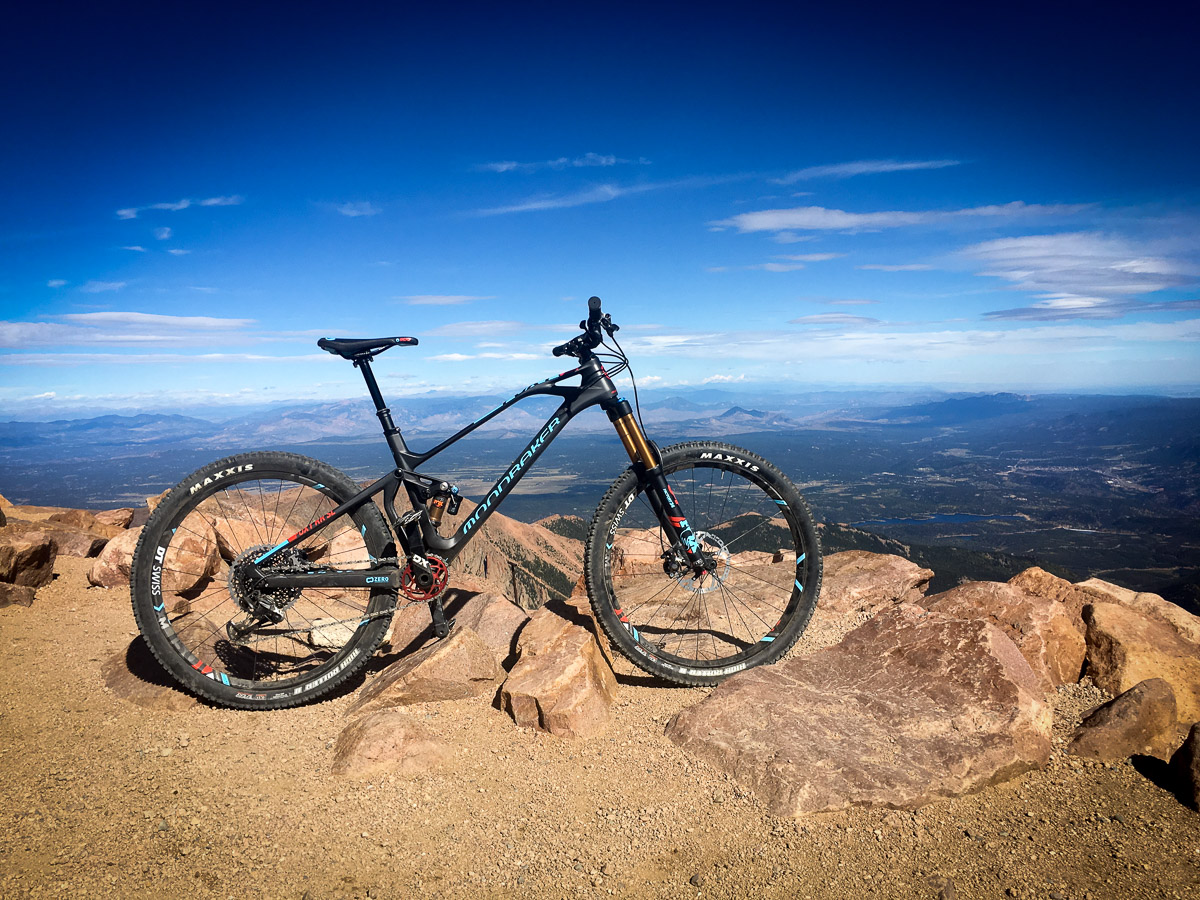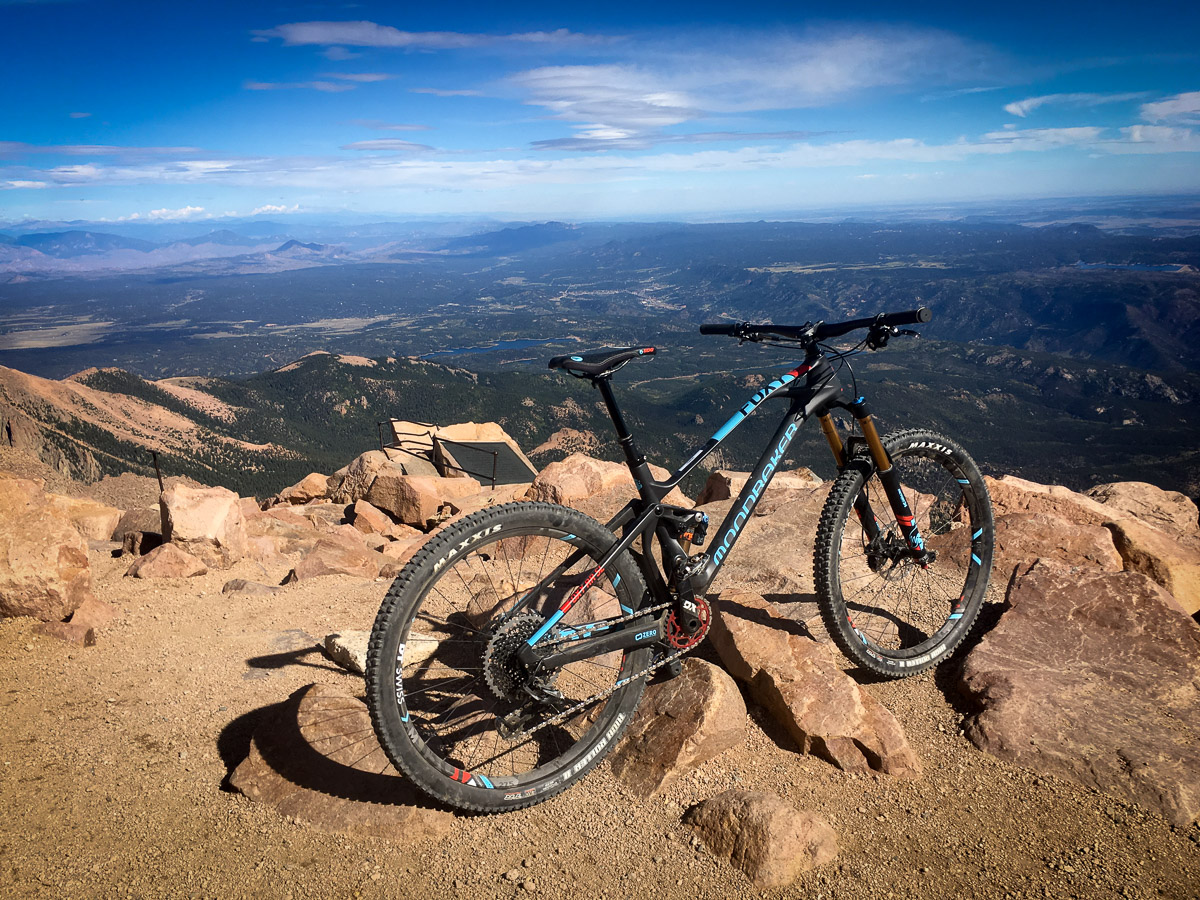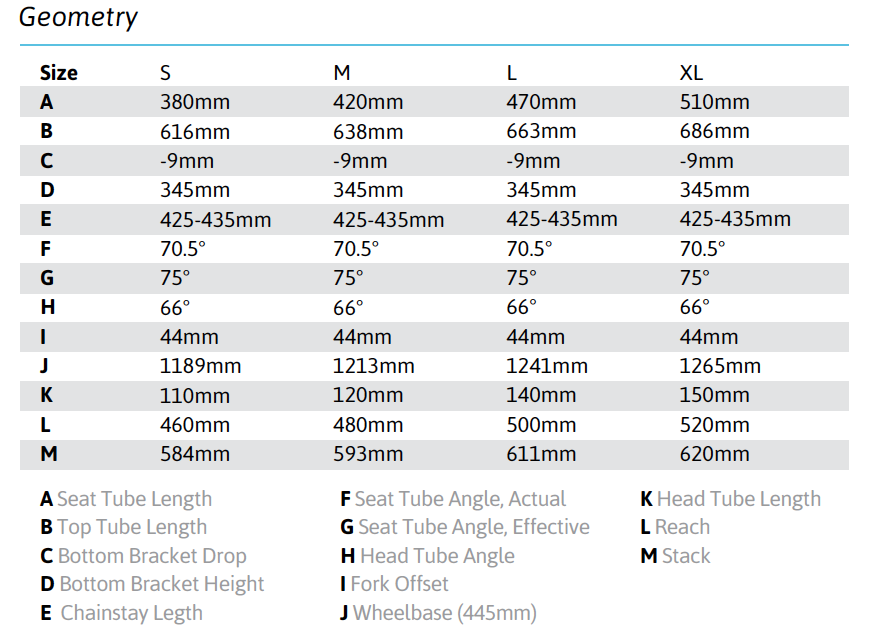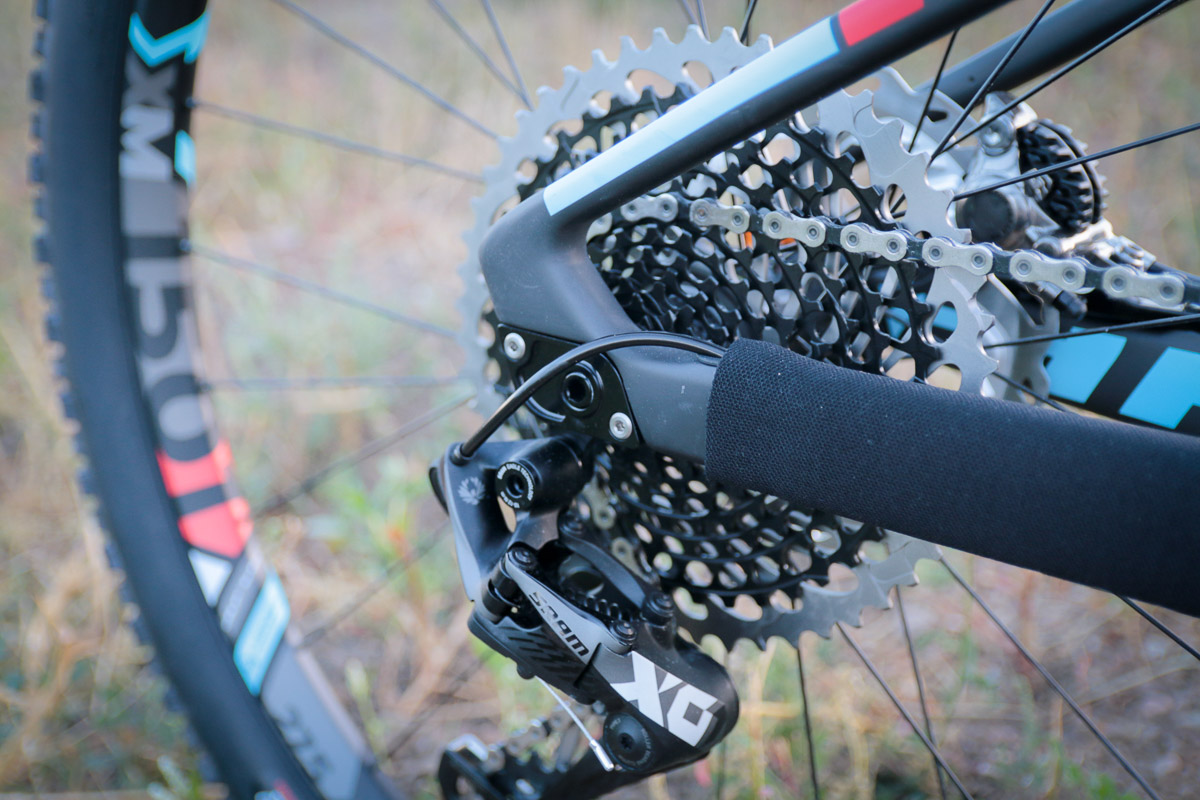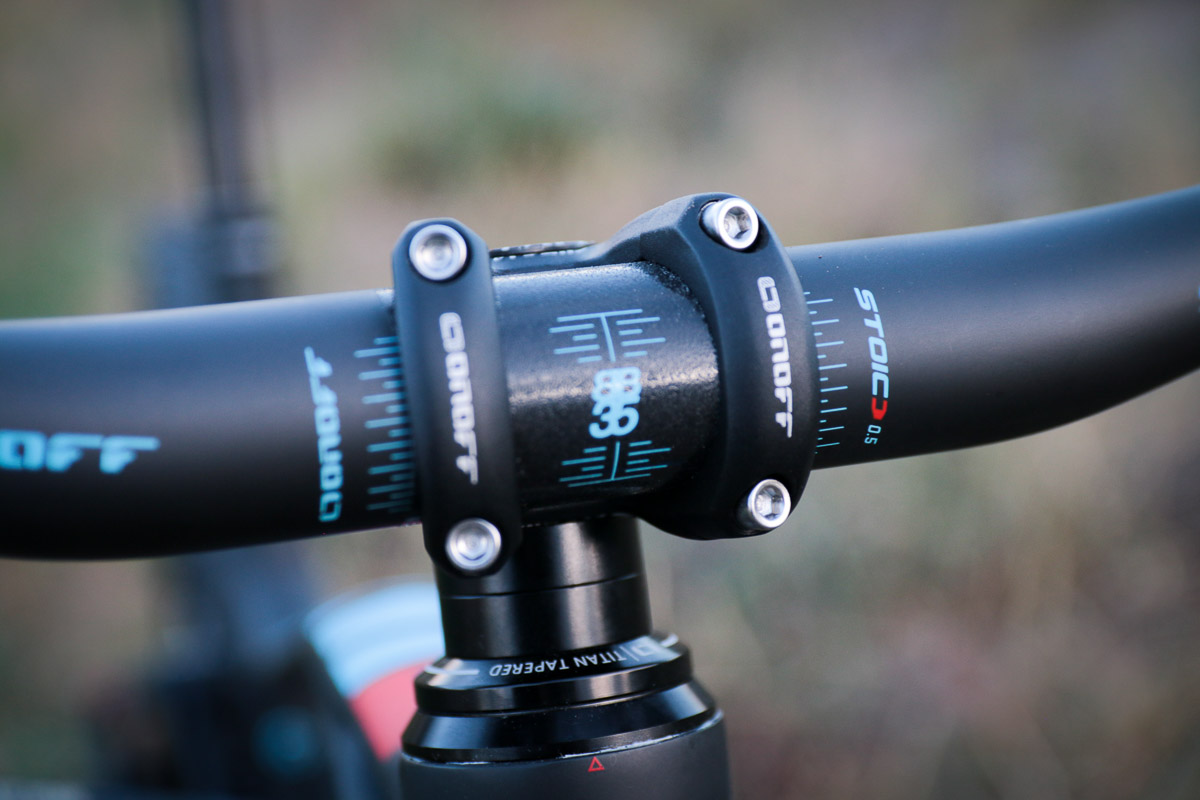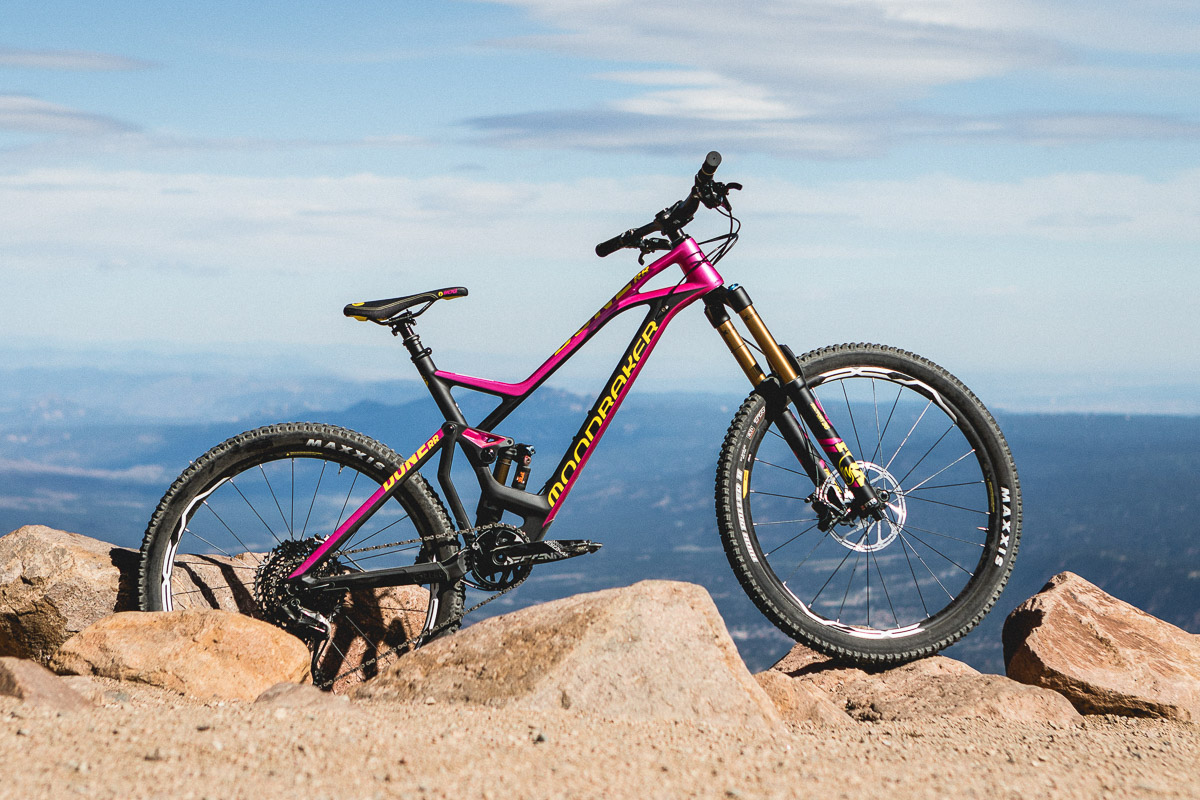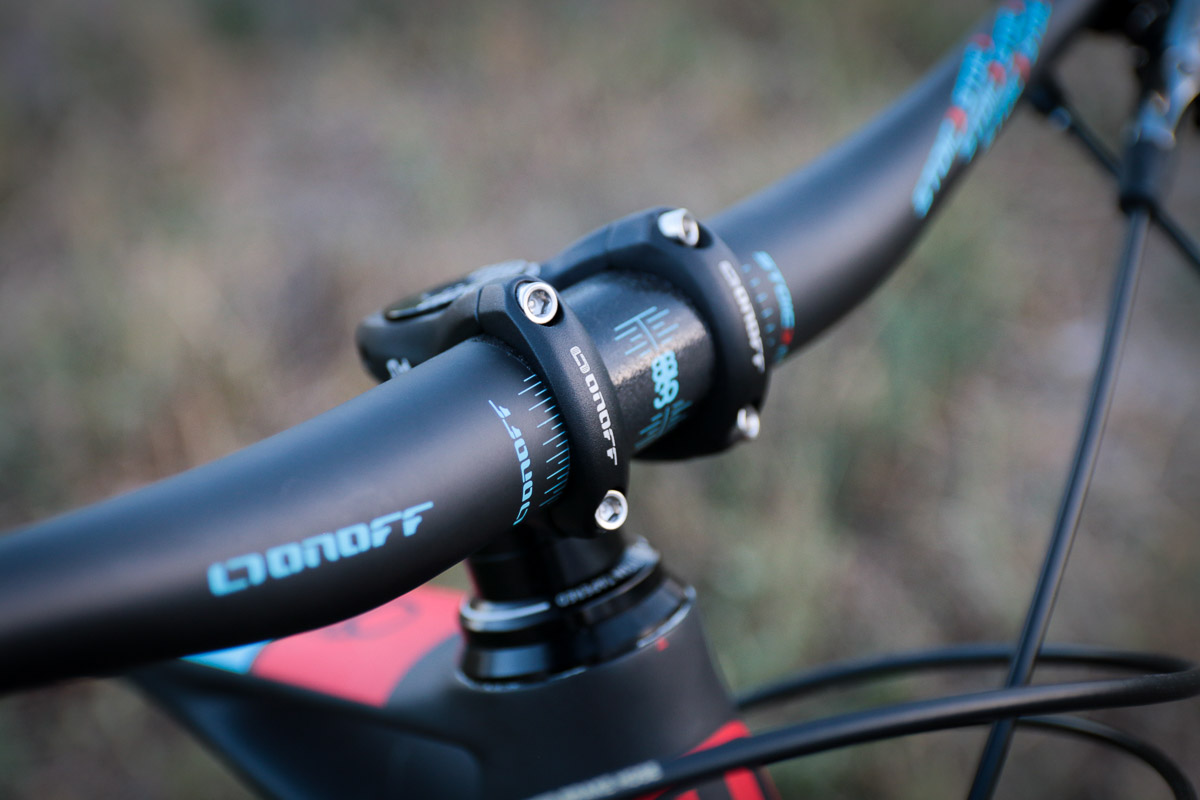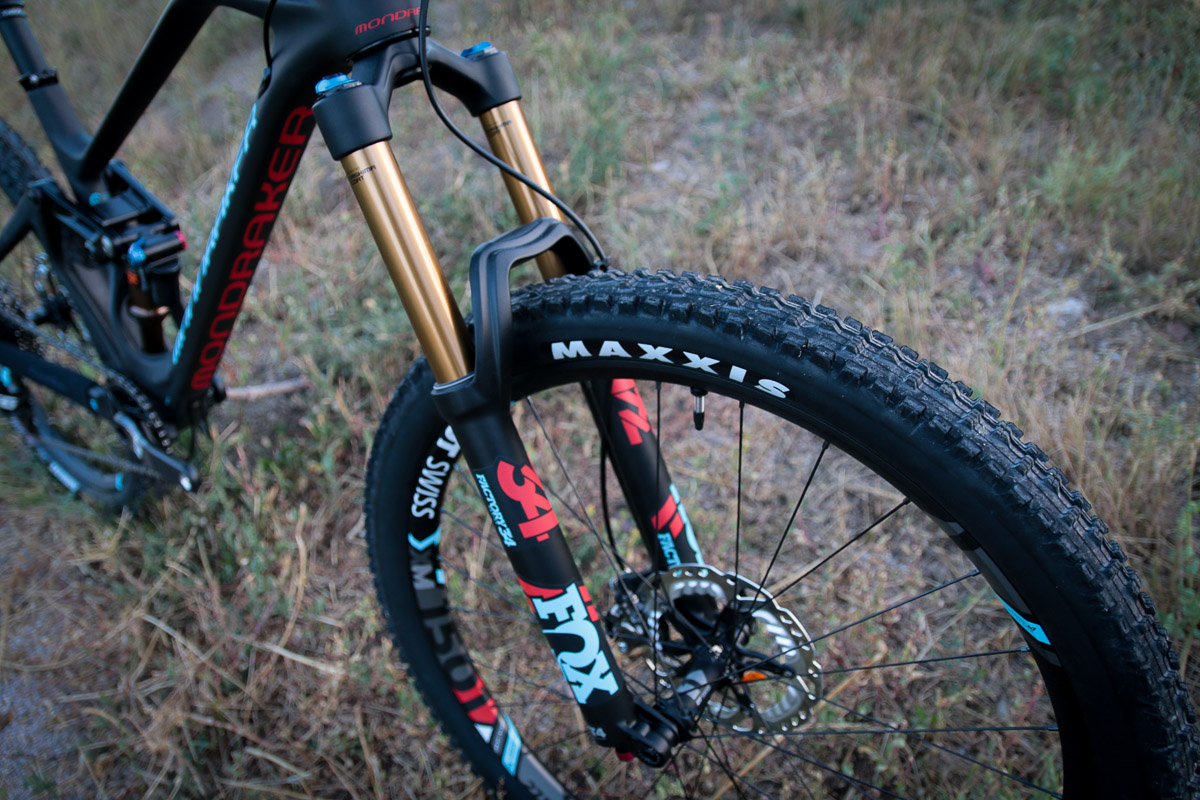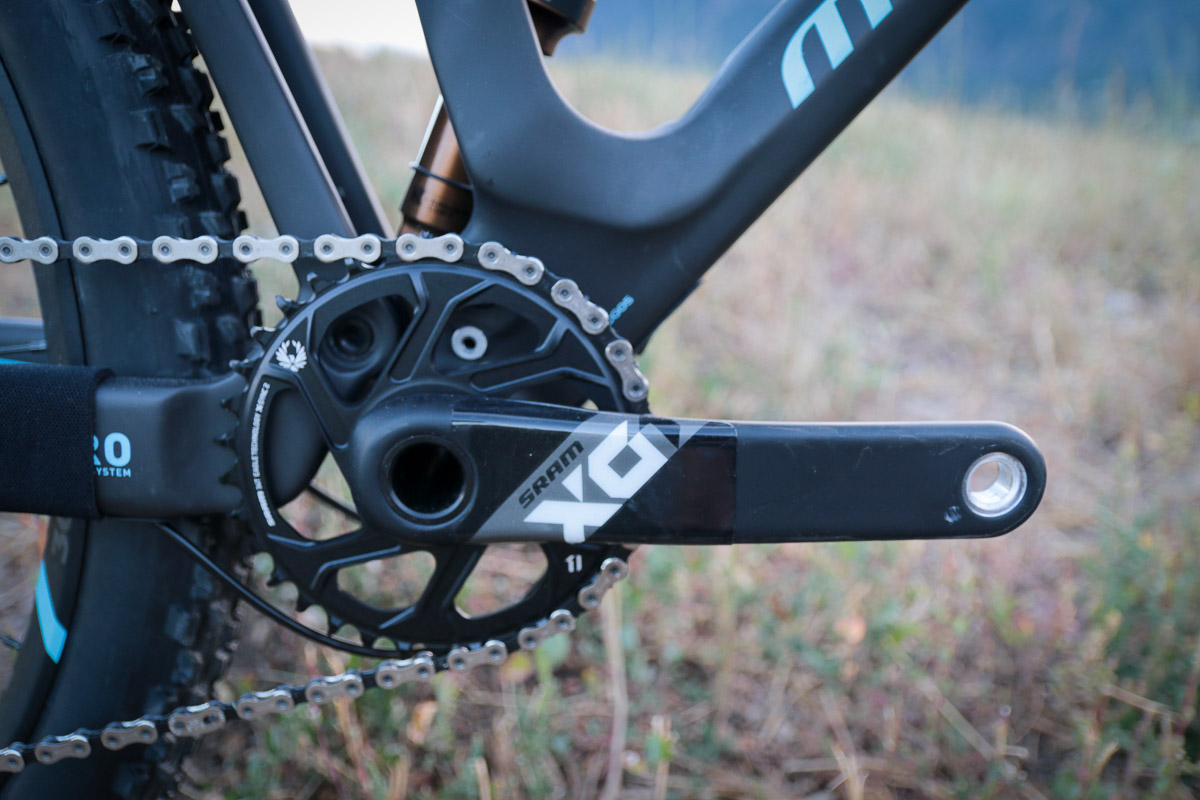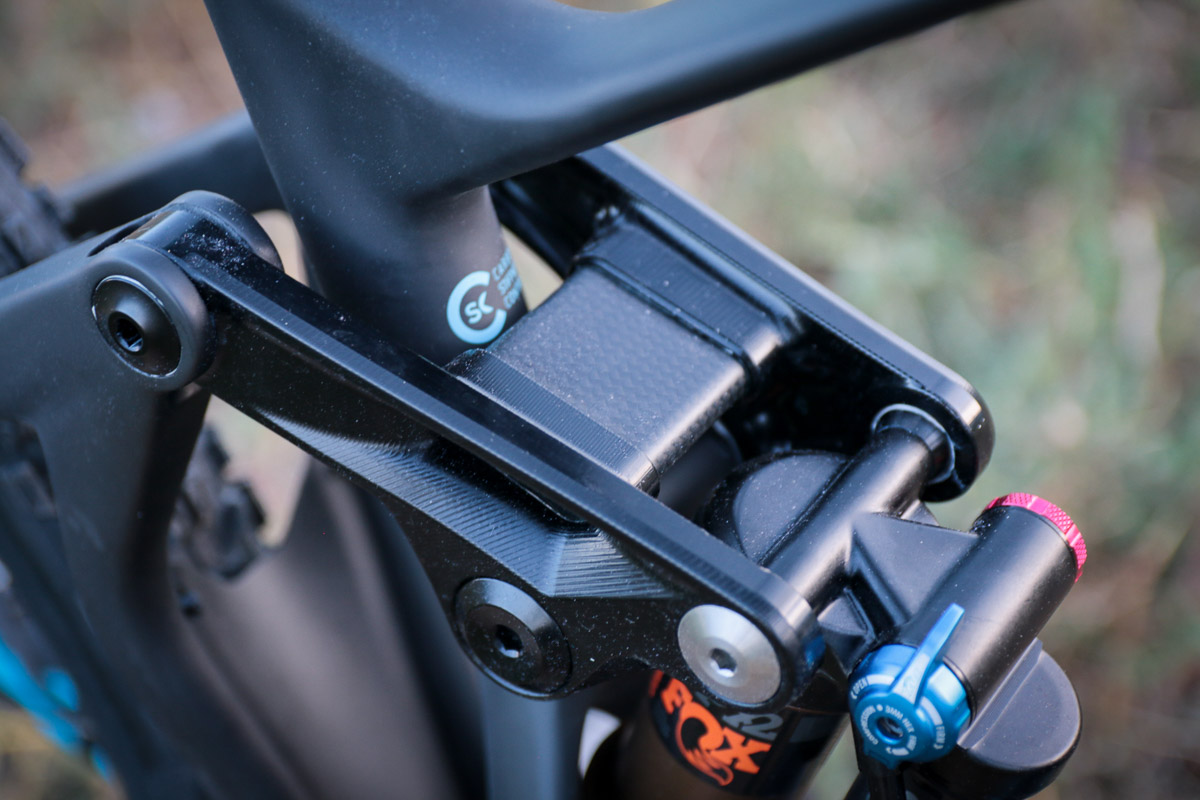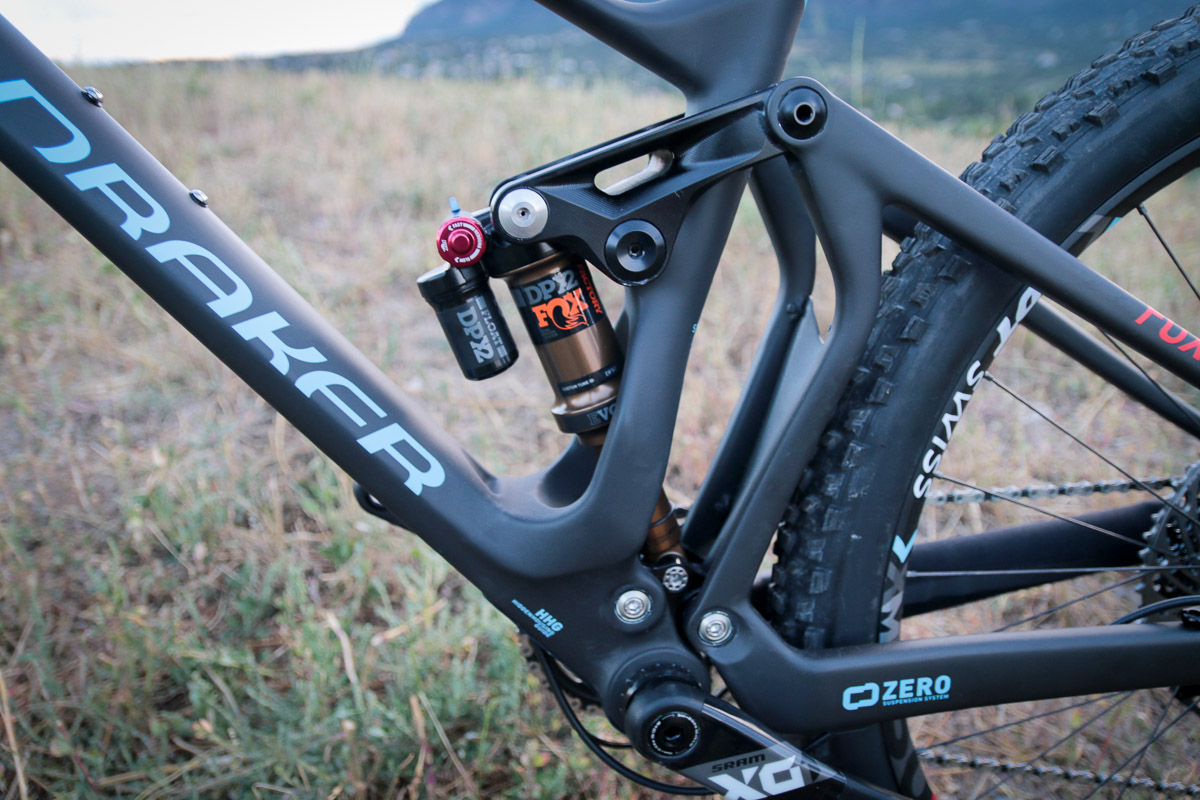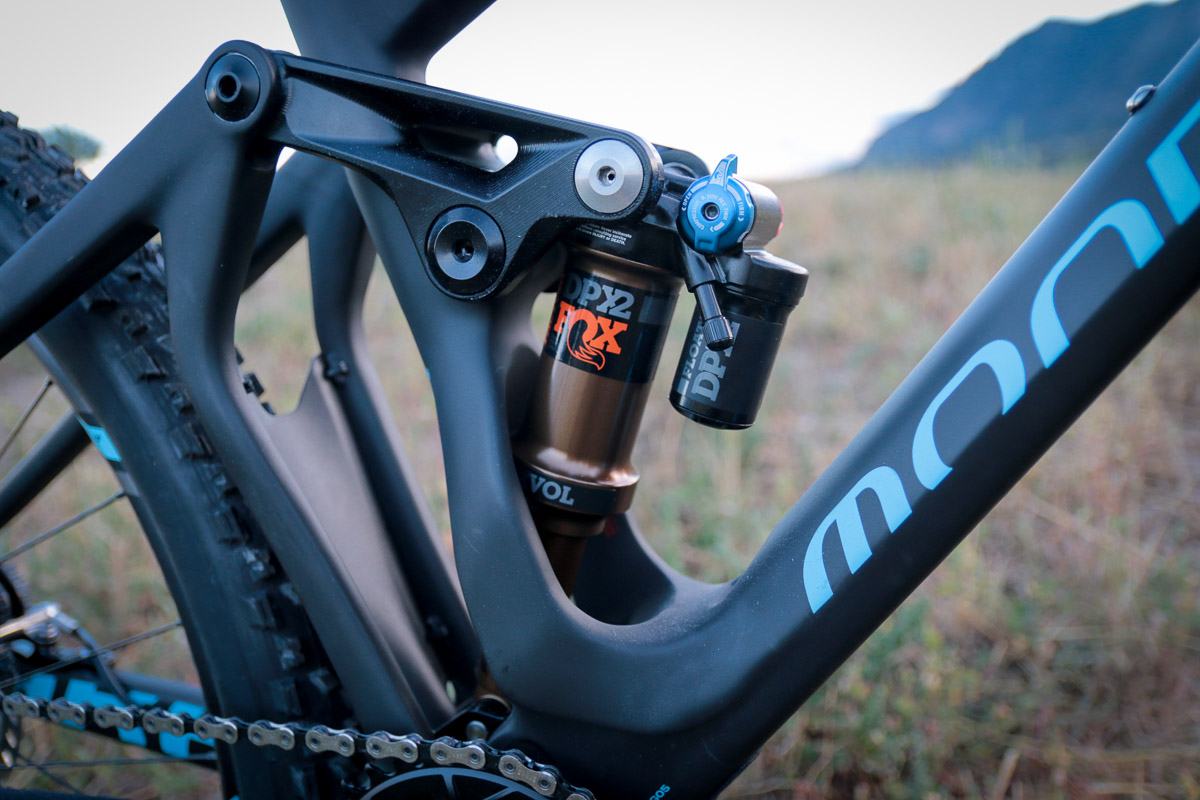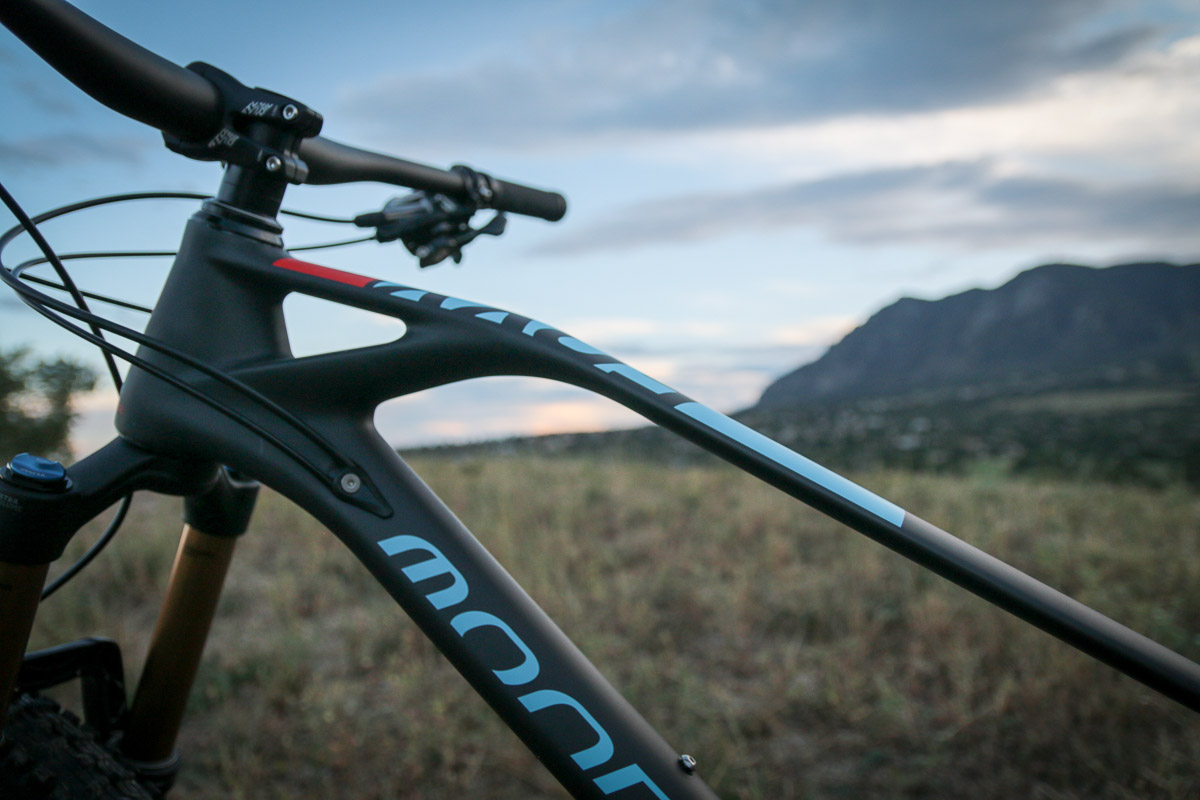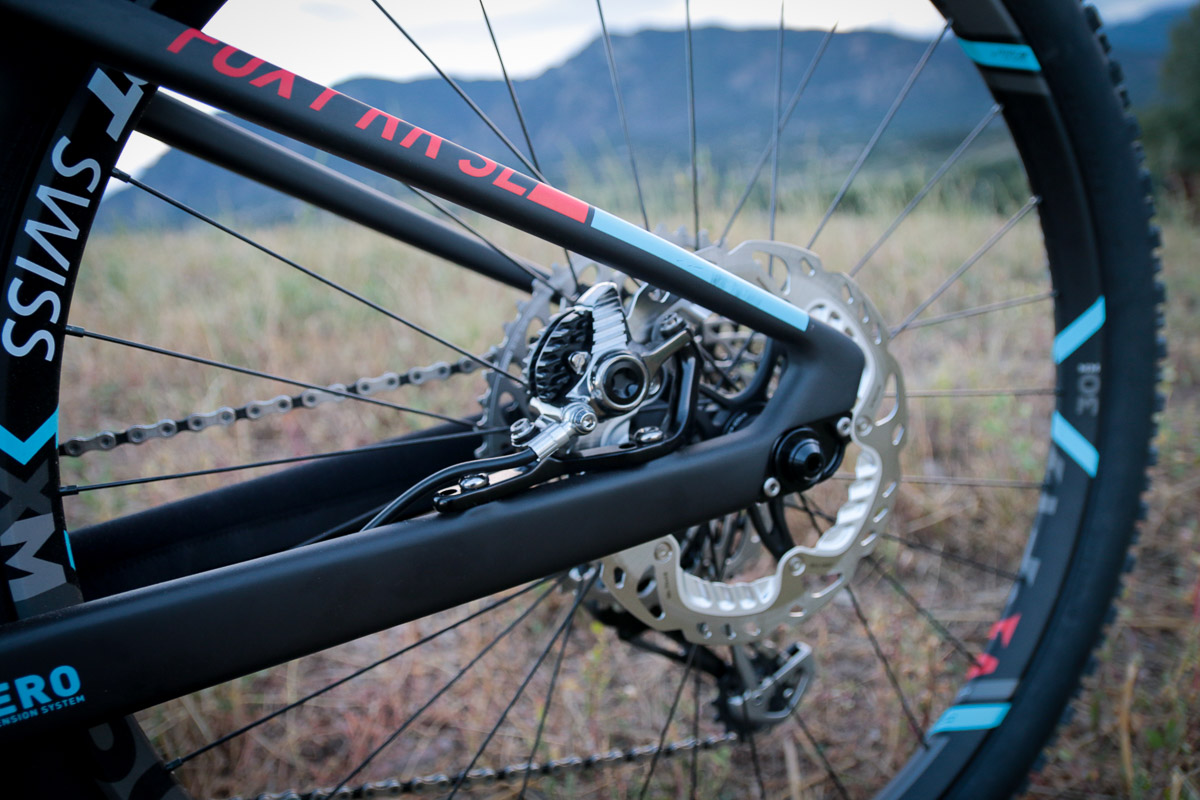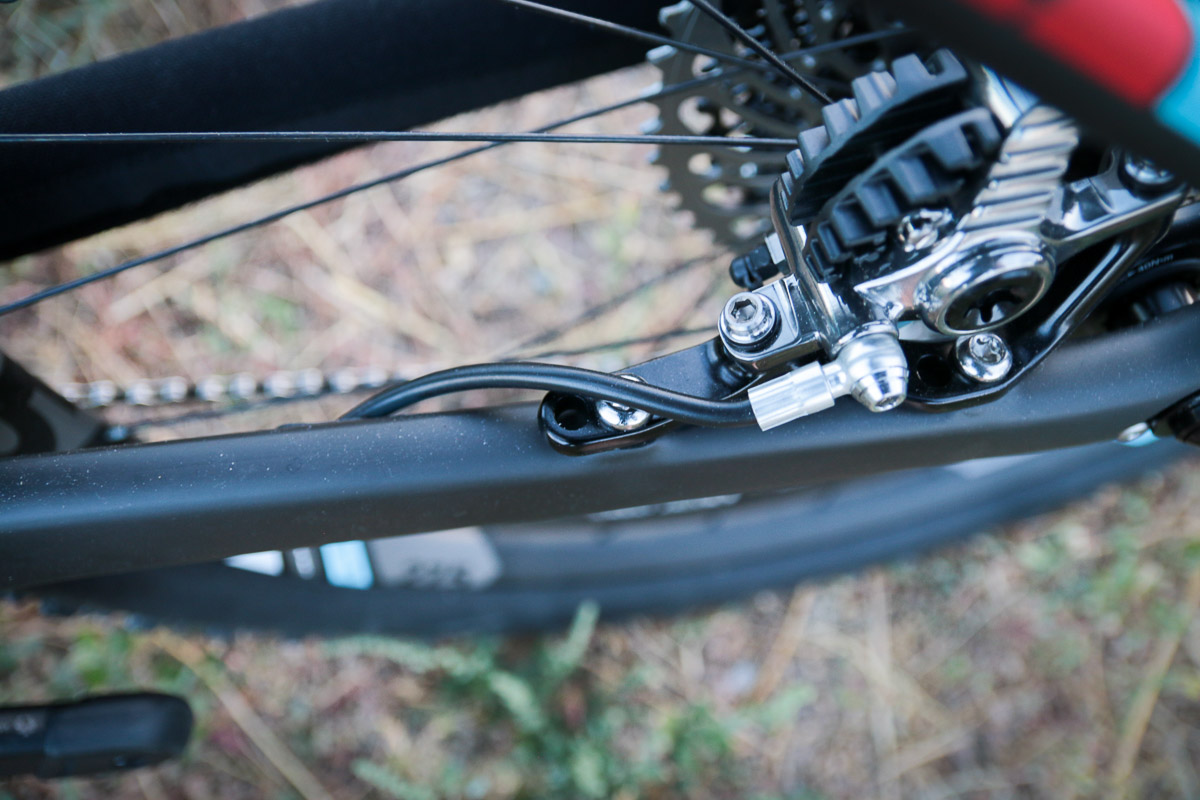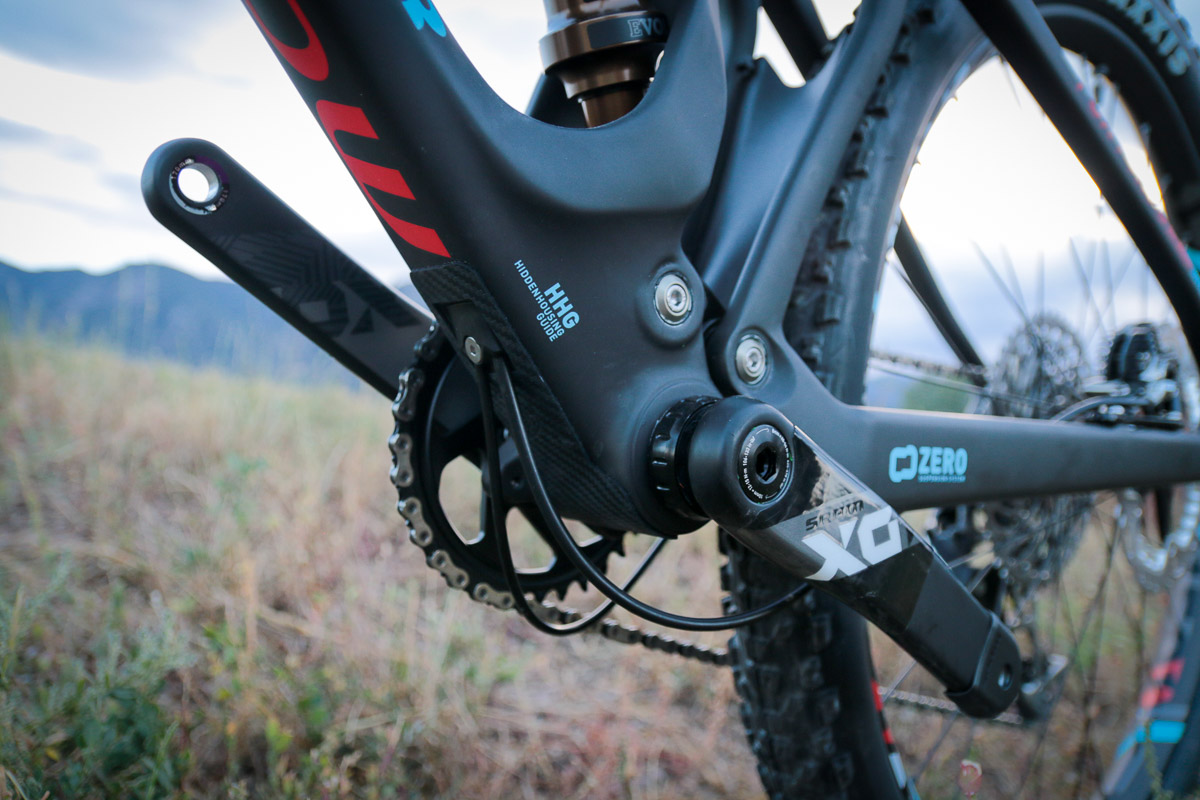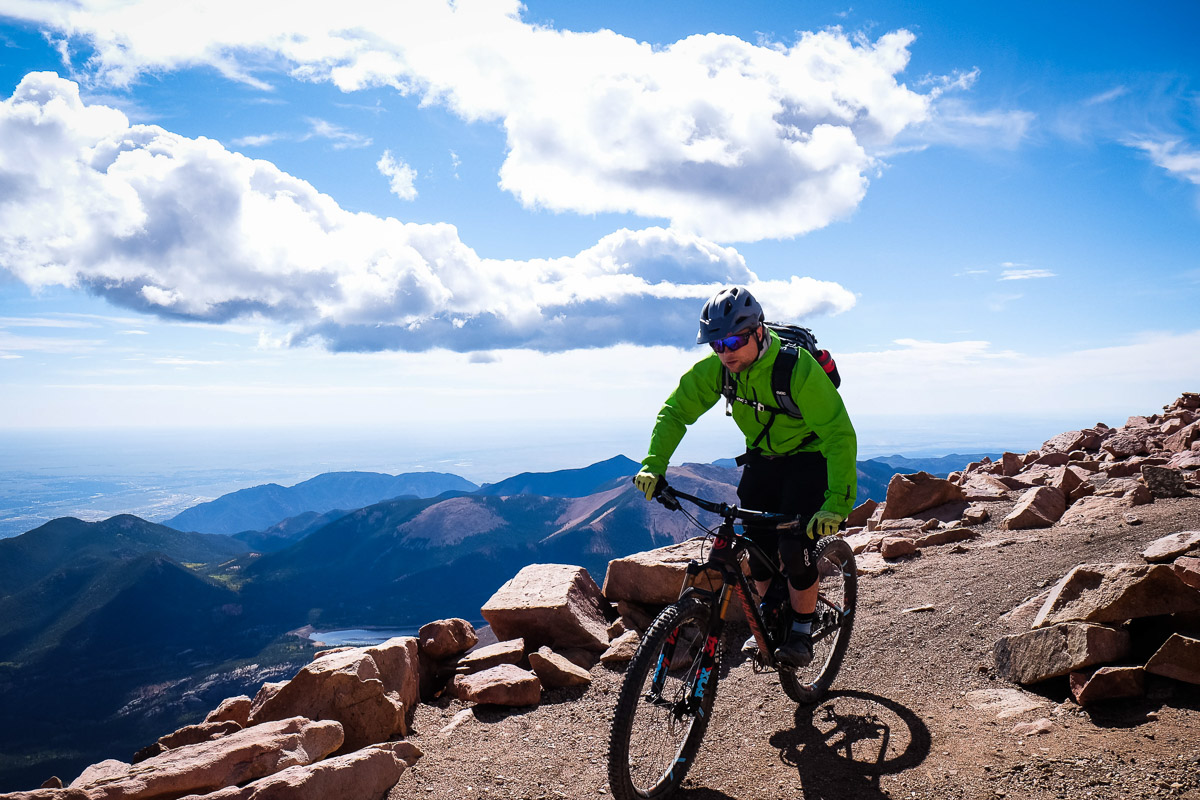It’s rare that my first ride on a new bike starts above 14,000 feet. But that was exactly where I found myself along with the new Mondraker Foxy RR SL. As part of their U.S. launch, we were about to drop down the side of Pike’s Peak – which would be the first time for me on the new bike. Talk about pass or fail.
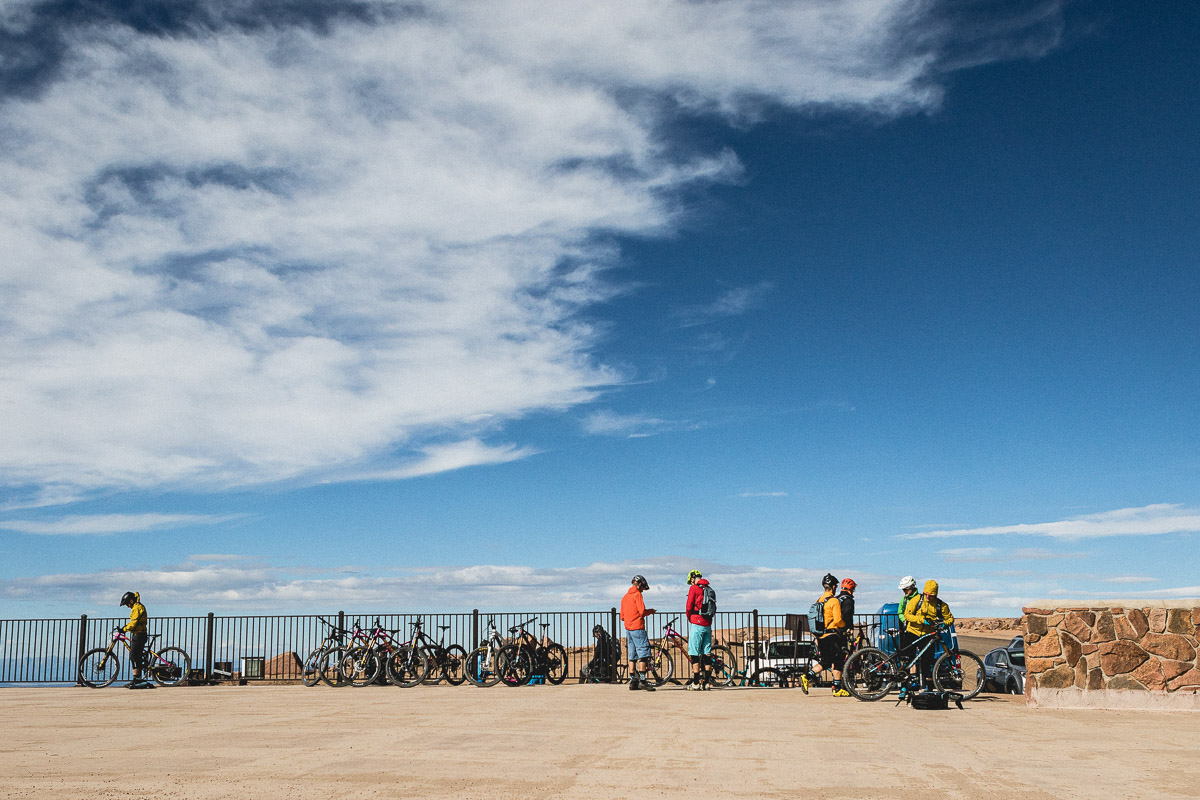
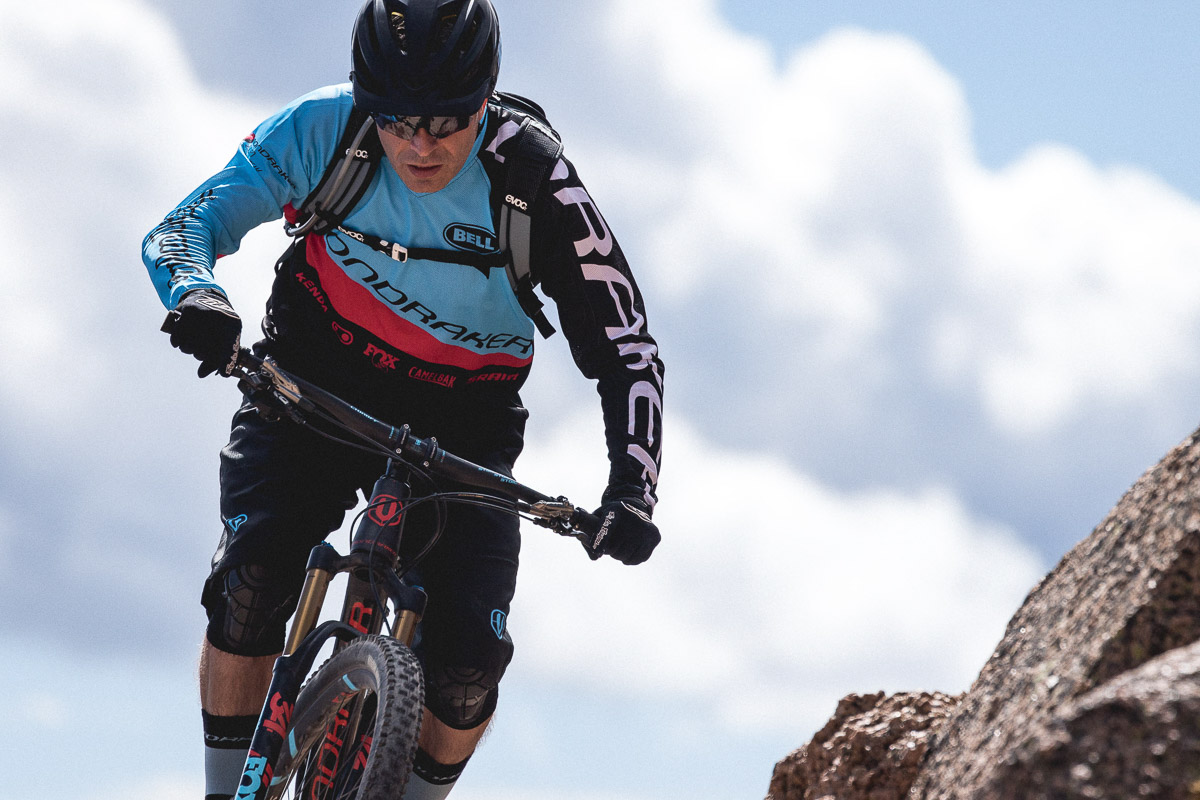
Along for the ride was a number of other journalists, as well as QARV Imports and Mondraker employees – including Mondraker’s CEO, Miguel Pina. If the Spaniards’ riding is any indication of how the bikes perform – they’re almost guaranteed to rip.
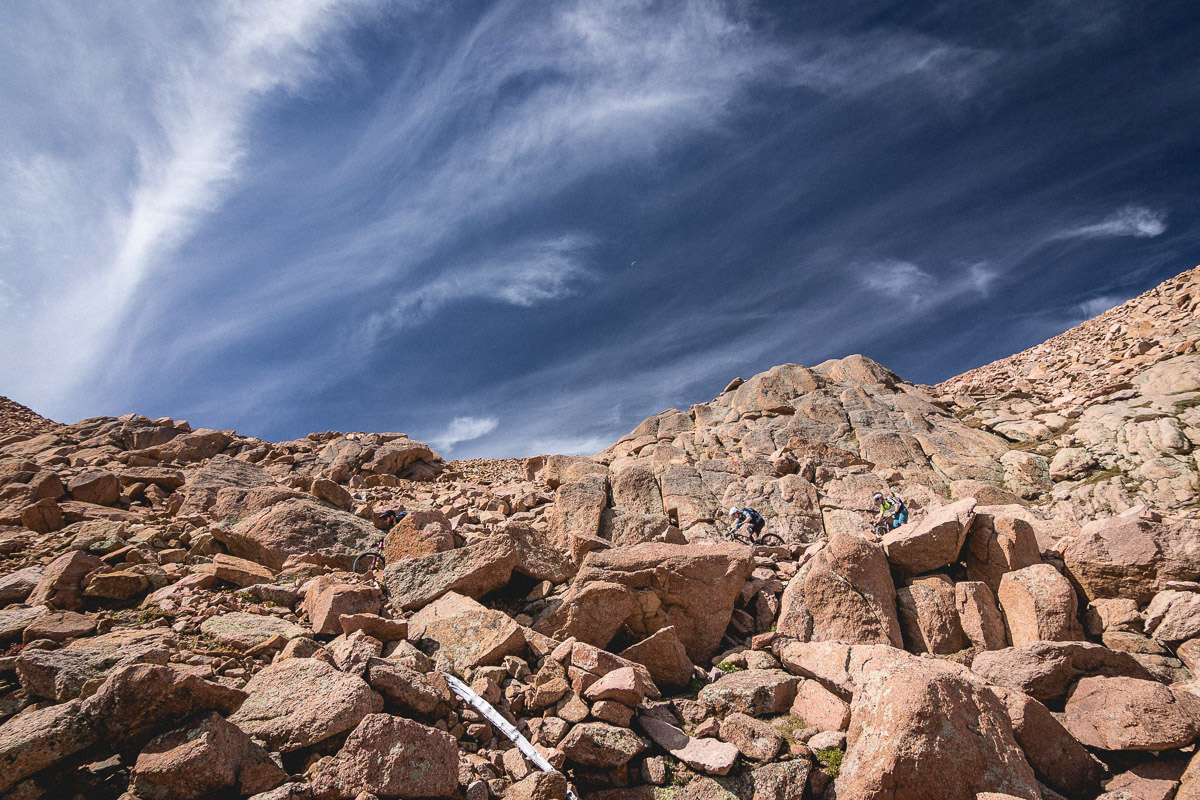
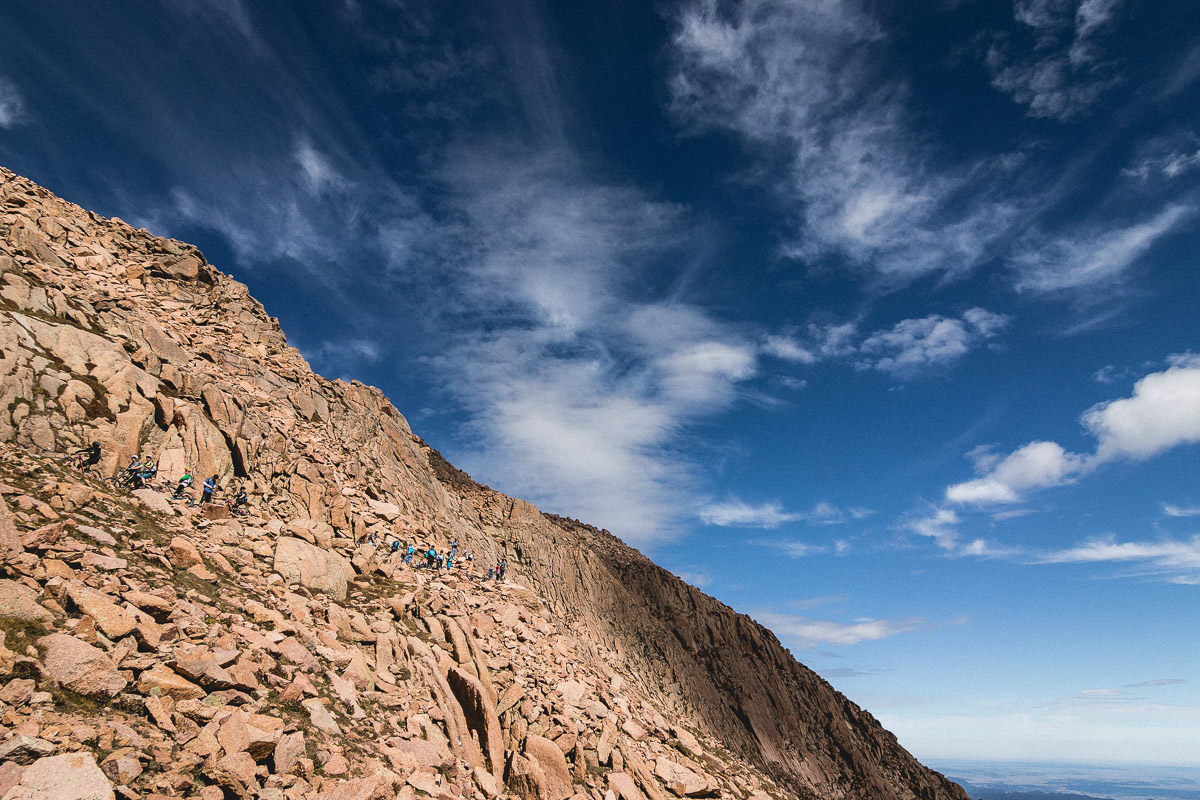
Starting just above 14,000 feet, the Barr trail is a Colorado Springs classic – both for riding down, and hiking up. Even the riding starts with a good bit of hiking as you make your way down from the peak through challenging boulder fields with a lot of exposure and consequence. Slowly, the rideable patches get longer, until you’re mostly pedaling through some old school, chunky, technical rock gardens that seem to go on forever.
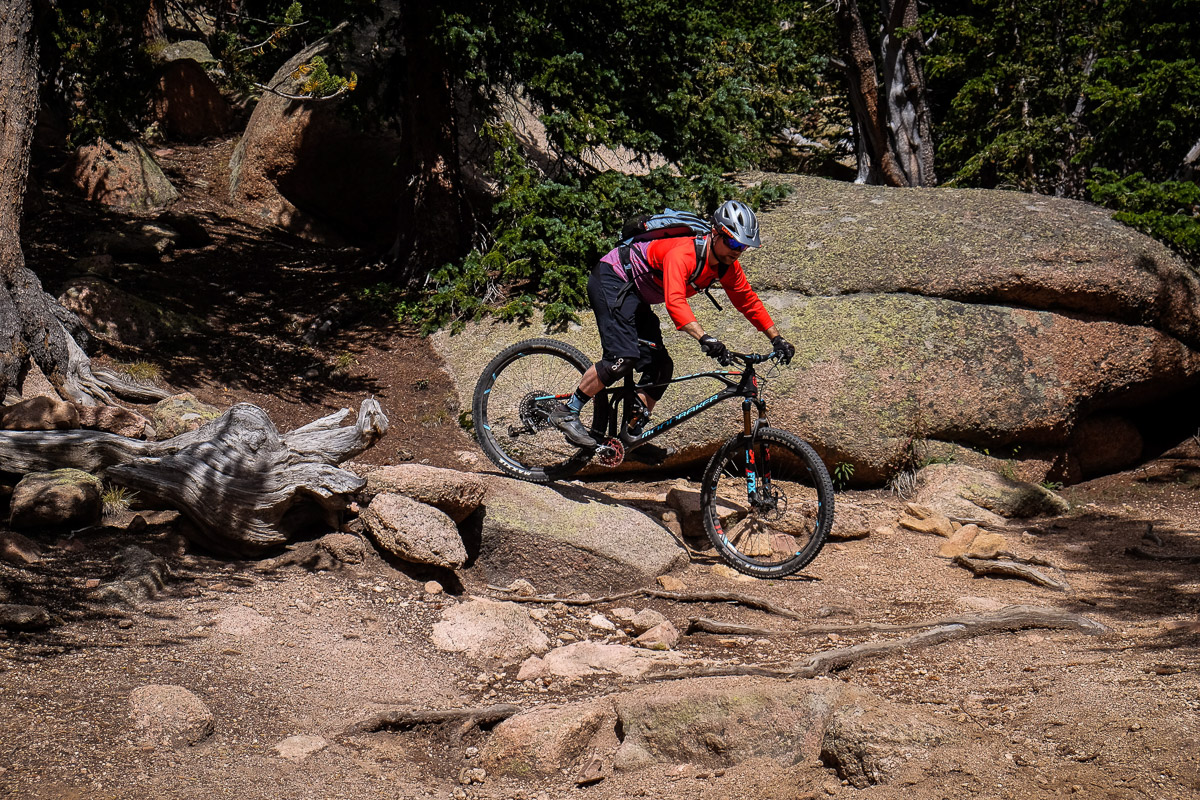
A veritable choose-your-own-adventure of line choice can result in some hairy situations – the kind which usually result in going over the bars. For me, this was the first noticeable benefit to Mondraker’s Forward Geometry. More times than I could count – I should have been OTB. Instead, the fork absorbed a massive hit, maybe the rear wheel came up a bit, but I was still rolling. And breathing a sigh of relief. It’s probably worth pointing out that not only was I on a completely foreign bike and a new trail, but I was also still dealing with a recently broken hand which made precise handling a bit of a challenge. In spite of that, the Foxy seemed to inspire complete confidence as it barreled through rocks that seemed purpose built to rip off a derailleur or to torpedo your bottom bracket.
Compared to when they first introduced Forward Geometry, Mondraker’s numbers aren’t quite as revolutionary any more. Many companies have moved to longer top tubes, shorter stems, slacker head tube angles, and steeper seat tube angles, but Mondraker still has them beat in terms of reach. All of their bikes are equipped with 30mm stems, or about as short as you can go before the bar hits the steerer tube. The longer front center and therefore, longer wheelbase does make cornering around tight switchbacks a bit more interesting, however. Watching the Spaniards, it’s clear that the preferred method might be hanging the back end out in a controlled drift. Otherwise, you’ll find yourself working a bit more to get it around the switchback. The tradeoff though, seems to be increased control, stability, and confidence while blasting through extremely technical terrain. The Foxy also grows a bit more capable this year with a updated geometry with longer reach, shorter chain stays, and a slacker head tube angle. Further adjustments can be made with an adjustable headset with different cups (included with RR SL, available for other bikes) that change the HTA by +/-1º, and adjustable dropouts which will grow the chain stay by 10mm. Mondraker says that if you go slacker on the head tube angle, you should go longer on the chain stays to offer proper balance.
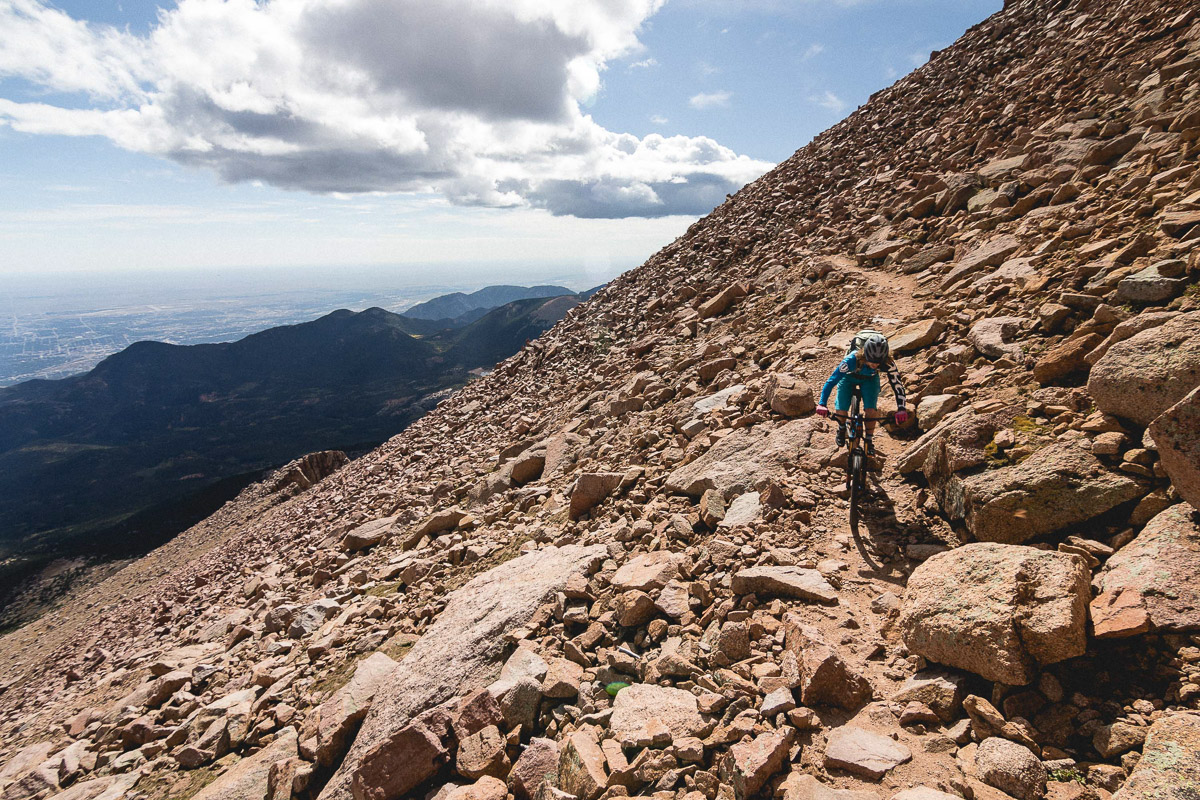
I ended up on the medium, and in spite of the top tube being 22mm longer than something like a medium Pivot Mach 5.5 with a 40mm difference in reach, the Foxy was surprisingly easy to get used to. I’ve always preferred a longer bike, but this is certainly taking it to the extreme. Realistically, I could easily have fit on the small as well which still has a longer reach and top tube than many medium frames. Bikes moving to longer top tubes and reaches has allowed a lot of riders to size down if they prefer, and here that’s true more than ever. But even on the medium I could run the full length of the 125mm dropper post with room to spare. Mondraker sizes the proper post differently per size with the smalls getting a 100mm, the medium a 125mm, and the larges and XLs go with 150mm. On paper, you may expect the Foxy to feel radically different on the trail, and while there were certainly differences, it wasn’t as noticeable as I had expected. However, I did feel like I was far more likely to send it at a higher rate of speed through rock gardens with bike swallowing holes than I typically would have. And with the increased confidence, came increased speed, which made it easier to clear tough sections of the trail which is exactly what Mondraker believes their Forward geometry provides.
Of course, the Mondraker is about more than just their Forward Geometry. Using their version of a virtual pivot point suspension with a floating shock, their Zero Suspension system manages to provide a very efficient ride while remaining active when it needs to be. Mondraker claims that this is due to the fact that the lower link moves to absorb the first 25% of the travel of excellent small bump compliance. At that point, the lower link flattens out and the upper link continues to compress with both links working together to absorb big hits. The result is a bike (even with long travel) the climbs incredibly well yet can rally downhill with the best of them. The day before our ride down Pike’s Peak I had a chance to pedal around the Dune RR which has 170/160mm of travel compared to the Foxy’s 150/150mm, and it seemed to pedal nearly as well through some punchy, techy trails in the Springs. I kept thinking that maybe I should have picked the Dune for our ride down the peak, but the Foxy turned out to be more than capable which makes sense given its all mountain pedigree.
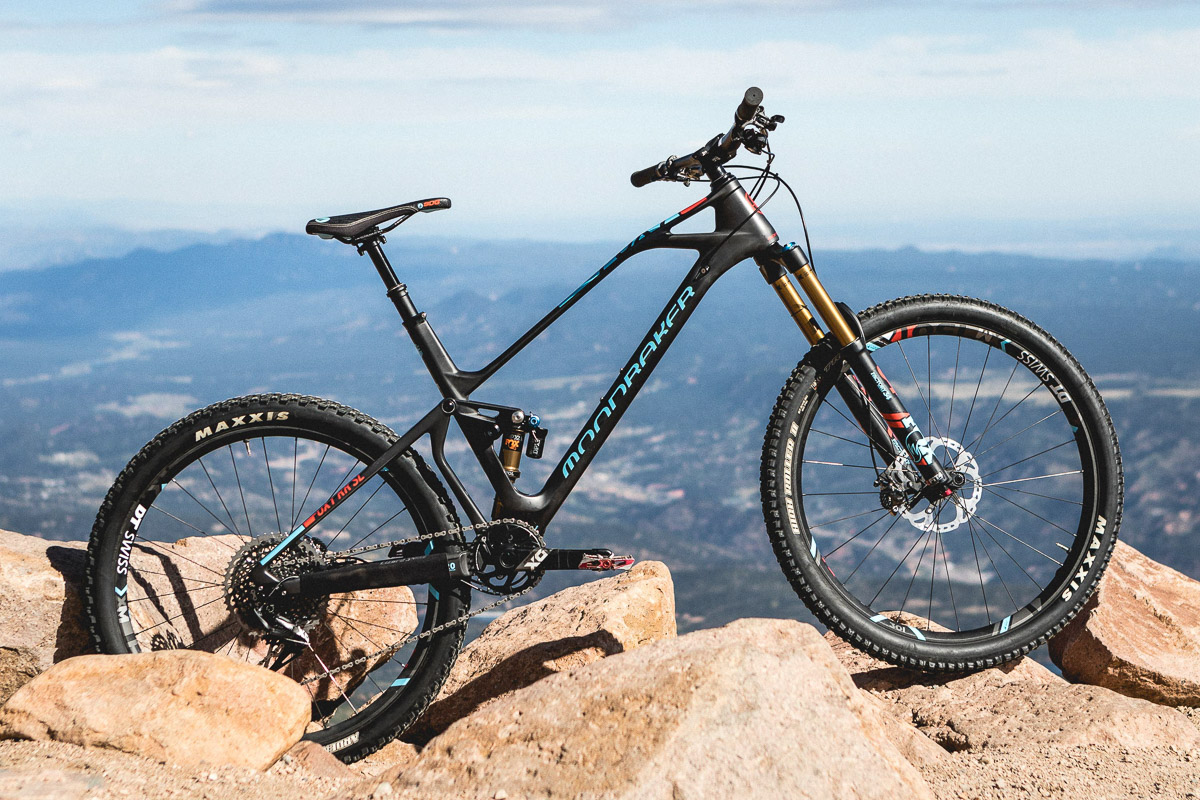
It was also quite a bit lighter than the Dune thanks to the build, thanks to their new Stealth Air carbon fiber. Calling it more than just higher modulus carbon fiber and more of a manufacturing process, the Stealth Air frames which are only found at the top end of the Foxy range, are said to save an impressive 350g over the standard Foxy carbon frame with a claimed weight of just 12.1kg (26.6lbs) for the complete build without pedals. Clearly, frame weight is important to Mondraker, but how the bike looks is just as important. Miguel made it clear that a lot of work goes into the industrial design of the bikes to incorporate their Spanish style yet offer a technical construction with the best ride qualities and stiffness to weight ratio possible.
Part of that meant a redesign of the suspension system to accommodate trunnion shocks – a first for Mondraker. To do it, a new CSC (Carbon Stiffness Control) upper link was created with a carbon brace and the pivots have been beefed up to 15mm from the previous 12mm and Enduro Max sealed bearings for increased durability and stiffness. Updated to 150mm of travel front and rear, the Foxy frame runs Boost 148 spacing, uses a threaded 73mm bottom bracket, and ISCG 05 tabs with a dedicated 1x design.
HHG (Hidden Housing Guide) cable routing is internal with an exit in front of the bottom bracket on the down tube, before reentering the chain stays for the shift and brake lines. You’ll also find a downtube protecter and chain stay protector, though as proven through a ton of rock strikes on the way down Pike’s Peak – even the non-protected parts of the frame seem super tough. It was the kind of ride where you feel bad for the bike with every impact, but at the end of the ride the bike seemed no worse for the wear other than some scratches. There’s also a pretty clever removable fender that zip ties to the uprights on the rear triangle to keep dirt and debris out of the shock tunnel.
After only having read about Mondrakers in the past, my first experience with the bikes was not a disappointment. As usual, one ride is only enough to warrant a first impression, but that impression was quite favorable. The U.S. market is already pretty saturated, but if all Mondraker frames ride this well, they should have no trouble making fans stateside. And me? Well, I can’t wait to get one of these in for long term testing to see what it’s like on my home trails.
